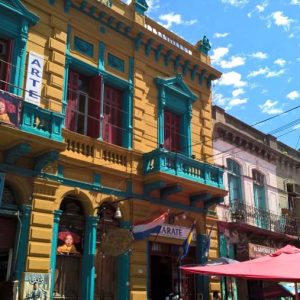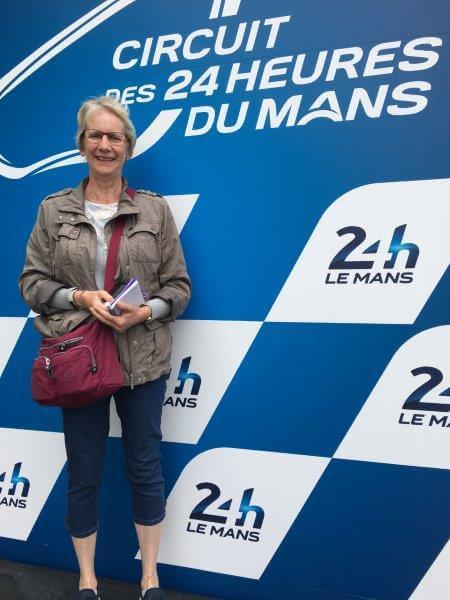 I may not have a bottle of champagne in hand – nor a sleek racing car in the pits – but standing on the winner’s podium at Le Mans, I can feel a real buzz at treading in the footsteps of champions. Fernando Alonso won the legendary 24 Heures du Mans in 2018 and nobody can predict who will stand here above the race track after this year’s event on 15-16 June.
I may not have a bottle of champagne in hand – nor a sleek racing car in the pits – but standing on the winner’s podium at Le Mans, I can feel a real buzz at treading in the footsteps of champions. Fernando Alonso won the legendary 24 Heures du Mans in 2018 and nobody can predict who will stand here above the race track after this year’s event on 15-16 June.
You don’t need to know anything about cars to be aware of this historic endurance race, nor to enjoy a visit to the Bugatti Circuit and the race museum which lie to the south-west of the city. But there’s a whole lot more to enjoy at Le Mans which makes this delightful city a great place for a stopover or short break at any time of year.
I took Brittany Ferries cruise ferry service to Caen-Ouistreham, just over 100 miles and around two hours’ drive from Le Mans, county town of the Sarthe department in the region of Pays de la Loire. If you like a good Roman ruin, you’ll love the tall city walls, built in red brick at the end of the 3rd century AD around the city of Vindinium. A substantial portion still stands today, decorated with white geometric patterns, and overlooking the Sarthe river.
Middle Ages more your thing? Then Le Mans delivers in shed loads. Our own Plantagenet dynasty kicked off here in 1128 when Geoffrey V Le Bel, Count of Anjou, married Matilda, daughter or England’s King Henry I. Clearly a bit of a dandy, Geoffrey would tuck sprigs of broom – genêt – in his hat whilst out hunting, earning himself the nickname of Plantagenet. Their son ascended the throne as Henry II and their grandsons included Richard the Lionheart and King John.
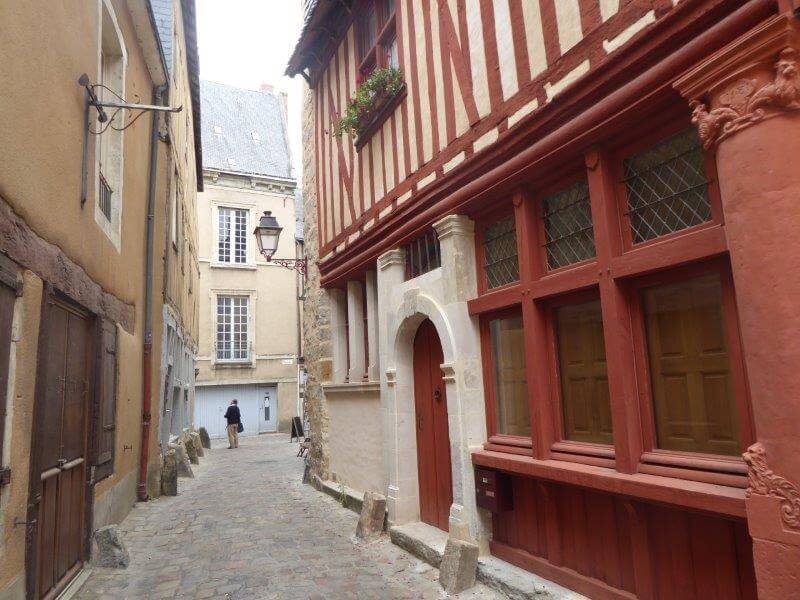 Visit Matilda and Geoffrey’s wedding venue, the soaring Cathedral of Saint-Julien, where highlights include the glorious side chapel decorated with 47 painted angels playing musical instruments. Then just wander round the pedestrianised Cité Plantagenêt to see the wealth of half-timbered buildings with multi-coloured facades. The Tourist Office is appropriately housed in the striking Maison du Pilier-Rouge – named after the red pillar on the outside corner – so pop in there first to pick up an annotated map or maybe book a guided tour.
Visit Matilda and Geoffrey’s wedding venue, the soaring Cathedral of Saint-Julien, where highlights include the glorious side chapel decorated with 47 painted angels playing musical instruments. Then just wander round the pedestrianised Cité Plantagenêt to see the wealth of half-timbered buildings with multi-coloured facades. The Tourist Office is appropriately housed in the striking Maison du Pilier-Rouge – named after the red pillar on the outside corner – so pop in there first to pick up an annotated map or maybe book a guided tour.
If the pull of the race track is irresistible, the 24 Heures du Mans museum is open daily, though I would avoid race days for the most peaceful experience. There’s much more goes on here than the iconic endurance race, both public events and private hire. When I visited, a motorbike club were doing laps beneath the winner’s podium, which added a certain va-va-vroom to the afternoon.
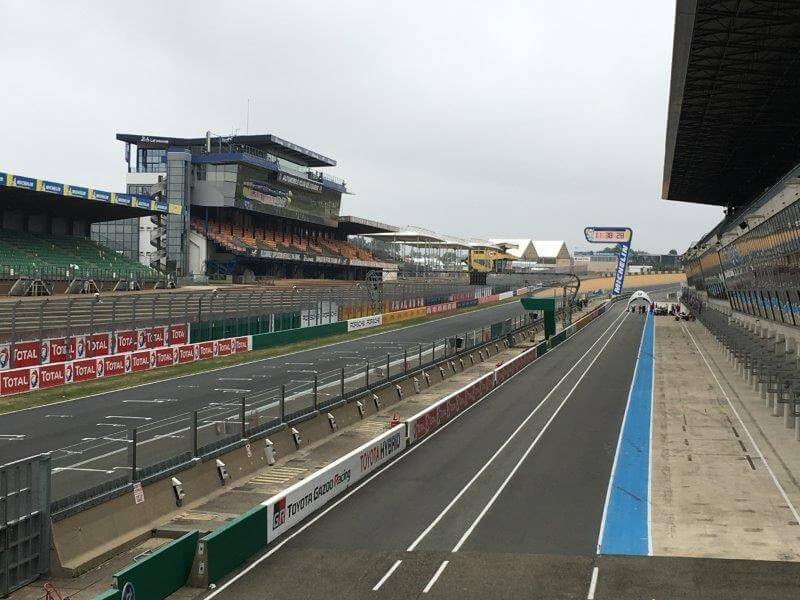 You can take a self-guided tour onto a limited section of circuit with an audio-guide, but if you want to stand in front of that famous blue and white 24h logo, and visit the Race Control centre, you’ll need to book on a guided tour. Pub quiz fans might like to remember that it was here that the tradition of spraying champagne began in the 1960s, when the American Ford team competed for the first time. The President had offered champagne to the winners but nobody kept the bottles out of the sun and they exploded on opening – a huge hit with the crowd that started a motorsport trend.
You can take a self-guided tour onto a limited section of circuit with an audio-guide, but if you want to stand in front of that famous blue and white 24h logo, and visit the Race Control centre, you’ll need to book on a guided tour. Pub quiz fans might like to remember that it was here that the tradition of spraying champagne began in the 1960s, when the American Ford team competed for the first time. The President had offered champagne to the winners but nobody kept the bottles out of the sun and they exploded on opening – a huge hit with the crowd that started a motorsport trend.
The museum itself is a mix of around 120 sleek cars, old and new; atmospheric photos and archive film from the earliest days of motor racing; and artefacts guaranteed to delight any motor sport fan. There’s been a museum at the Circuit since 1961 and in this purpose-built building since 1991, and there was talk of a possible refurb when we visited last year, but at the time of writing (19 April), it seems to be business as usual.
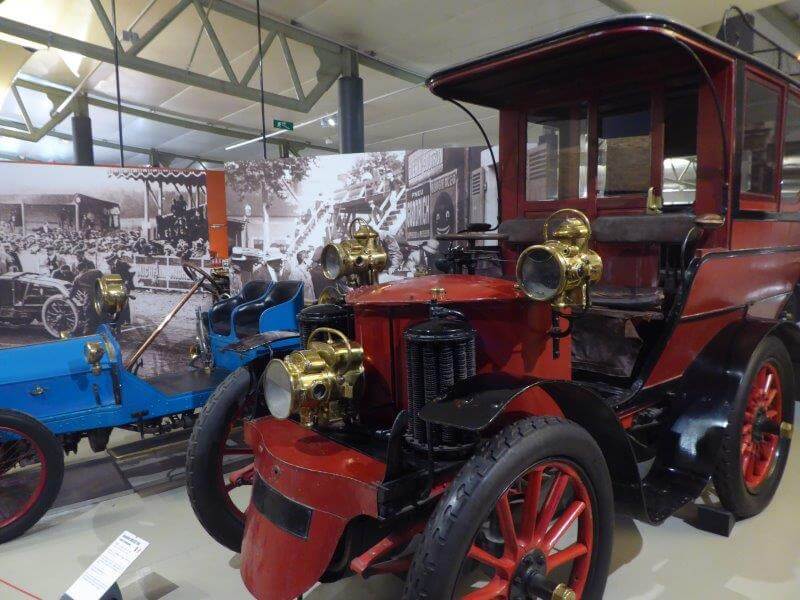 So why Le Mans? Motor races from town to town kicked off in France in the late 19th century and Le Mans was at the forefront of motor manufacture as early as 1873, thanks to the Bollée family, whose original trade was bell manufacture. This is turn led to an improvement in local roads as car ownership grew.
So why Le Mans? Motor races from town to town kicked off in France in the late 19th century and Le Mans was at the forefront of motor manufacture as early as 1873, thanks to the Bollée family, whose original trade was bell manufacture. This is turn led to an improvement in local roads as car ownership grew.
The 24-hour endurance race was the brainchild of three local businessmen and car enthusiasts, keen to give manufacturers the chance to test their cars and push their products. The first race was held in 1923 and today, the event is run by the Automobile Club de l’Ouest (ACO) on a combination of public roads and the Bugatti circuit. Discover the full, fascinating story at the museum.
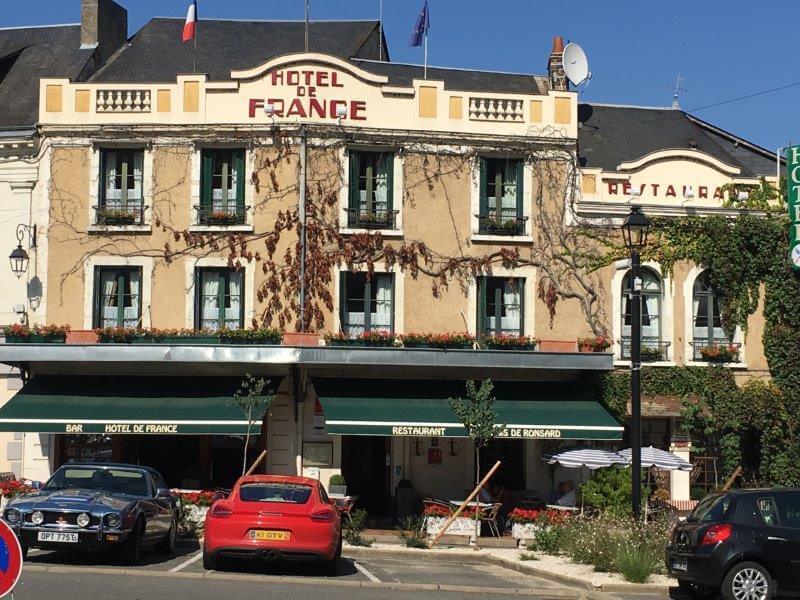 For a different kind of motoring atmosphere, I’d recommend a night or two at the Hôtel de France in La Chartre-sur-le-Loir, around an hour away to the south along straight roads through pleasant farmland. The valley of Le Loir lies between Paris and its big sister La Loire, a delightful area of lush countryside, historic small towns and impressive chateaux.
For a different kind of motoring atmosphere, I’d recommend a night or two at the Hôtel de France in La Chartre-sur-le-Loir, around an hour away to the south along straight roads through pleasant farmland. The valley of Le Loir lies between Paris and its big sister La Loire, a delightful area of lush countryside, historic small towns and impressive chateaux.
In the 1950s and ‘60s, this charming hotel overlooking the town square was the base for racing teams, sports fans and celebrities, as technical crews prepared their cars in the courtyard before driving across country to line up on the racetrack. The wall of the bar is covered in nostalgic photos of vehicles and drivers, including my Hollywood hero, petrolhead Steve McQueen who visited the hotel whilst filming his motor-race movie entitled simply Le Mans.
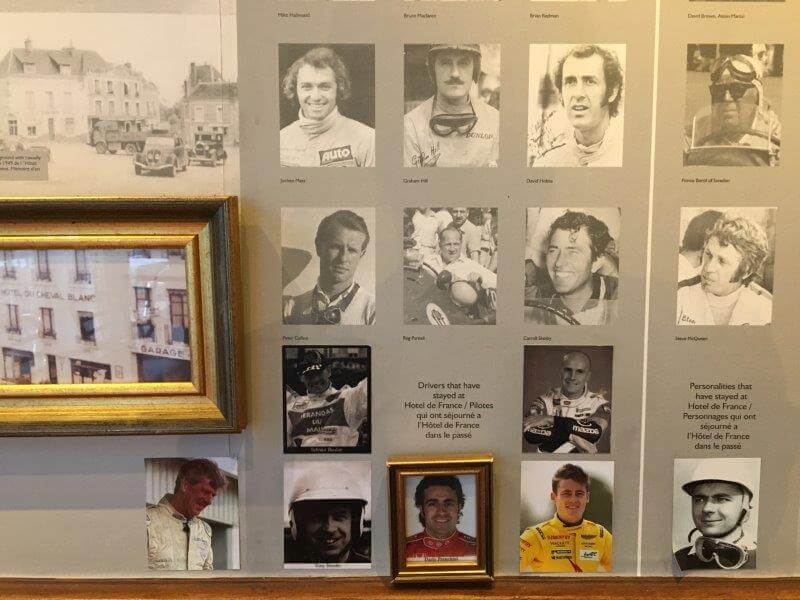 Today the hotel is owned by British entrepreneur and classic car fan Martin Overington. The bedrooms have all been given a 21st century makeover and the Relais de Ronsard restaurant is renowned for its gourmet fare (closed Sunday evenings and Mondays, when guests can eat at La Brasserie).
Today the hotel is owned by British entrepreneur and classic car fan Martin Overington. The bedrooms have all been given a 21st century makeover and the Relais de Ronsard restaurant is renowned for its gourmet fare (closed Sunday evenings and Mondays, when guests can eat at La Brasserie).
Not surprisingly, the Hôtel de France is a popular stop with British classic car clubs taking part in rallies or heading to French motorsport events, so don’t be surprised to find an Aston Martin or two, a Triumph or a Porsche outside the entrance. But whatever you drive, you’ll be made very welcome!


